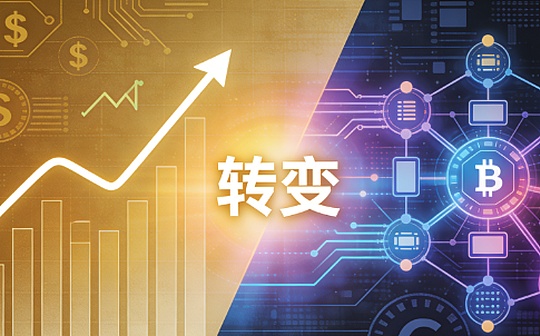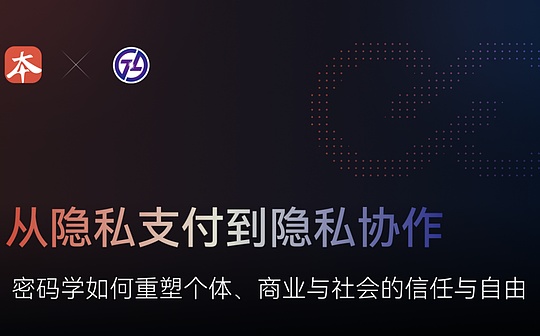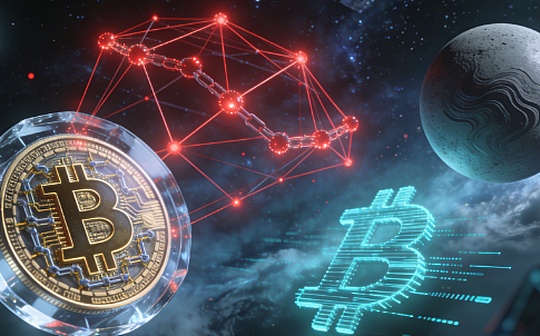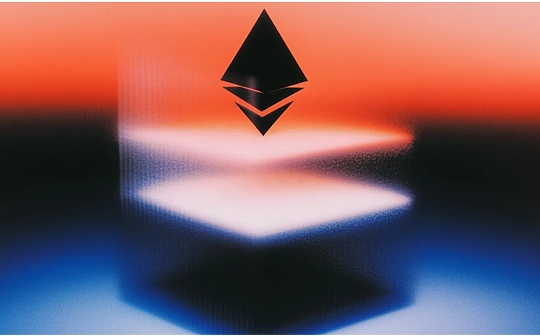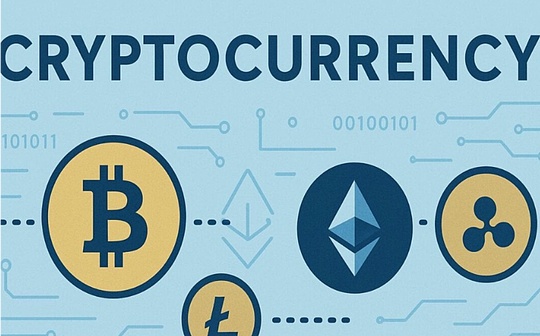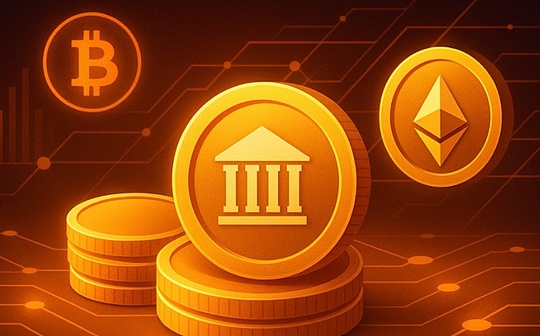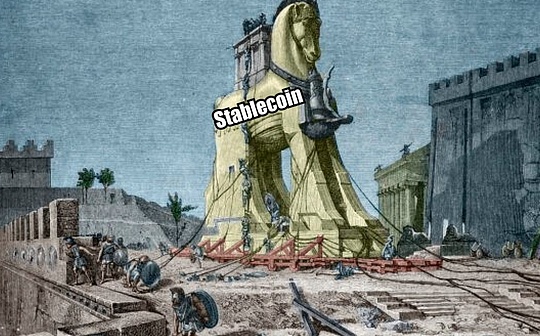
Author: Ryan Yoon, Source: Tiger Research, Compiled by: Shaw Bitchain Vision
summary
-
Stable positiones itself as a “Trojan Horse” in the stablecoin market, aiming to achieve large-scale adoption through USDT-centric infrastructure.
-
It offers a fee-free USDT transfer, sub-second settlement, and a simplified interface to address critical obstacles such as high fees, slow transaction speeds and complex user operations.
-
The expected plan is to attract users through free and seamless transfer services, and then expand to payments, decentralized finance (DeFi) services and institutional cooperation.
1. Stablecoin: The “Trojan Horse” entering the market

Stablecoins quietly enter the cryptocurrency market, like a “Trojan horse”.
Stablecoins have now developed into the dominant force in the ecosystem.At first, they were primarily seen as tools to reduce volatility.Over time, stablecoins have evolved into a core component of market infrastructure.
The stablecoin market dominated by USDT has a circulation supply of more than US$150 billion, a user base of more than 350 million, and even more than Visa’s transaction volume.The circulation supply exceeds US$150 billion and the number of users exceeds 350 million.
Their development reflects the role of a bridge between traditional finance and digital finance.In centralized exchanges, they are the main medium for the conversion between fiat and cryptocurrencies.In the field of decentralized finance (DeFi), they are the benchmark assets that provide liquidity and borrowing.For cross-border remittances, they offer a faster and more economical option than traditional banks.
The shift in market behavior is eye-catching.Early cryptocurrency transactions relied on direct transactions of tokens tokens, such as BTC/ETH or BNB/ETH, with value referenced by Bitcoin.Today, trading pairs like BTC/USDT and ETH/USDT dominate.The benefits of decentralized finance (DeFi) are usually denominated in USDT.In parts of Southeast Asia and Latin America, USDT is increasingly used to directly pay, replacing the physical dollar.
The market used to rely on volatile token valuations, and now stablecoins have become common account units.
They were initially introduced by demand and now serve as the central axis of the cryptocurrency ecosystem.
2. Shadow of Growth: Limitations of Emerging Infrastructure
Rapid expansion also reveals structural weaknesses.The current stablecoin infrastructure faces three key constraints.

1. Unpredictable high transaction fees
Stablecoins operate on multiple blockchain networks, but when the network is congested, the handling fee will rise sharply, making small transactions unrealistic.In some cases, sending $10 may incur a $20 fee.This undermines the core use of stablecoins as a daily payment medium.
2. Settlement time is slow
On Ethereum, confirmation of stablecoin transactions can take several minutes or even longer, depending on the network condition.Real-time settlement is crucial for use cases such as online checkout or brick-and-mortar retail, and this delay is unacceptable.
3. Complex user experience
Managing Gas fees, wallets and private keys still has a high entry barrier for ordinary users.For consumers who are used to simple payment interfaces such as Paypal, the current usage of stablecoins is still too complicated.
These infrastructure restrictions form a major obstacle to the next stage of popularization of stablecoins.Ironically, within the cryptocurrency ecosystem, stablecoins have long become the de facto benchmark asset, but for ordinary users, the daily usage rate is still very low.
Stablecoin has completed its initial role as a “Trojan Horse”, bringing stability to a turbulent market and taking a central position in the ecosystem.
The next challenge is to break through the cryptocurrency field and enter the traditional financial market and mainstream consumer payment field.To achieve this, the current technical limitations need to be fundamentally addressed, which requires a new “Trojan Horse” strategy.
3. Stable: the new “Trojan Horse”
Creating a new “Trojan Horse” for the market does not require the invention of another stablecoin.Stablecoins are just tools that are pegged to the US dollar.The next “Trojan Horse” is a dedicated infrastructure for existing stablecoins, especially those that already dominate the market.

This is where Stable comes in.Unlike general-purpose blockchains, Stable is a blockchain specially built for USDT.It does not support USDT and other tokens at the same time, but serves as a high-speed network dedicated to USDT transactions.

Stable’s mission is three aspects:
-
Cancel the handling fee for P2P USDT transfer: Completely waive the handling fee for P2P USDT transfers, solving the inefficiency problem that even USD10 transfers in the existing network may cause excessive handling fees.
-
Implement sub-second settlement: All transactions are settled in one second, eliminating the waiting time common in physical and online retail payments.
-
Simplify user experience: Hide handling fee calculation and wallet management to achieve intuitive operation without technical burden.
The key is that these improvements are interrelated.Removal of fees simplifies user experience, while faster transaction processing improves practicality in real-life business.Together, these factors laid the foundation for the expansion of stablecoins from the cryptocurrency ecosystem to the mainstream payment market.
Stable’s vision is not just to become another blockchain, but to be the core of infrastructure that supports the USDT ecosystem with a market capitalization of $160 billion.
It aims to address the structural limitations of existing stablecoin infrastructure, including unpredictable fees, slow settlement speeds, and complex user interfaces.This approach moves away from the fragmentation mode of each chain that independently supports USDT and moves to a unified environment optimized for USDT operations.
4. How Stable architecture works

To enable Stable’s core vision to be realized, multiple technical elements must be coordinated.Stable is still in the test network stage and the team is preparing for the official launch.Its expected architecture clearly demonstrates the operating structure of the system.
4.1 No handling fee USDT0 transfer: EIP-7702 and account abstraction
The stable network runs in two token types.
USDT0 represents USDT introduced from an external network through a cross-chain bridge.gasUSDT is a network fee payment token that is 1:1 pegged to USDT0 value and is only used for transaction fees.Both can be exchanged 1:1 for the actual USDT.
To achieve P2P transfers without fees, Stable utilizes EIP-7702 and account abstraction technology.The key advantage is that users only need to hold USDT0 to make all transactions.

In the current blockchain system, there are two independent account types:
-
External Ownership Account (EOA): Standard wallets (such as MetaMask), controlled by private keys, are able to sign transactions, but have limited functionality.
-
Contract Account (CA): A smart contract that can execute complex logic but cannot initiate transactions independently.
Account abstract merges these account types, allowing standard wallets to have the functionality of smart contracts.This allows the user to specify operations such as “pay the handling fee with USDT” or “request for exemption of the handling fee”.
The first criterion to solve this problem is ERC-4337.It requires creating a new smart wallet and transferring funds from the existing wallet, a process that is prone to user operational errors.
-
Previous Methods: Create a new smart wallet → Transfer funds from an existing wallet → Use a new address
-
EIP-7702: Keep existing wallet → Add smart contract function → Keep the same address
EIP-7702 eliminates migration steps by enabling smart features on existing wallet addresses without transferring funds.Users can continue to use their existing MetaMask wallet and add smart features.
In Stable, all wallets natively support EIP-7702, enabling smart wallet functionality without additional settings.This includes features such as transaction fee sponsorship that are available directly in existing wallets.

Example:
-
Ryan sent 100 USDT0 to Jay via MetaMask.
-
Wallet requests that support EIP-7702 are exempt from a handling fee
-
The fee is borne by the payer.
-
Ryan’s balance was reduced by 100 USDT0, while Jay received the full amount.
No handling fees are required, and Ryan does not need to hold or calculate fees, similar to remitting money through PayPal.This eliminates the need to hold a separate handling fee or manually calculate the fee.
4.2. Sub-second transaction finality
Stable uses StableBFT consensus algorithm to generate a block every 0.7 seconds, and finally determine the transaction after a single confirmation..This eliminates the common “pending” phase in many blockchain transactions, providing an experience similar to instant approval of payment terminals.
To further speed, Stable is developing Block-STM parallel processing technology that enables execution of independent transactions simultaneously, accounting for about 60% to 80% of network activity.This practice is similar to setting up multiple cash registers in a store to reduce waiting time.
In the long run, Stable plans to upgrade to a consensus mechanism based on Autobahn DAG.This structure allows multiple blocks to be proposed simultaneously and separate data propagation from sorting, thereby reducing bottlenecks.Internal test records up to 200,000 transactions per second, but this is still in the pre-production stage.
4.3. Simplified user experience
Stable eliminates the need to calculate fees and manage separate fee tokens while maintaining compatibility with existing Ethereum.This allows users to continue to use familiar tools such as MetaMask and Etherscan without additional learning costs.
In addition to simple compatibility, these tools also feature USDT-optimized features, making them run smoother: MetaMask supports USDT0 transfers without handling fees, while Etherscan displays USDT transaction history in a more intuitive format.
It’s like keeping all existing apps while upgrading to a new smartphone.Users retain familiar environments but gain enhanced functionality.
also,USDT from other networks can be seamlessly imported through existing LayerZero cross-chain bridges.USDT0 adopts LayerZero’s OFT (cross-chain universal token) standard, eliminating the complexity of traditional bridging.In the traditional model, each network maintains a separate USDT version, resulting in a dispersed liquidity.
With the OFT standard, a single USDT0 functions exactly the same across all networks.Whether bridged from Ethereum or Arbitrum, the resulting tokens are the same USDT0, eliminating liquidity fragmentation and simplifying asset transfers.
The planned development projects include the Stable Name System, which will replace complex wallet addresses with human-readable names, further improving ease of use.Similar to an email address, users can send funds to identifiers such as “ryan.stable” or “jay.stable”.Although it is still in the planning stage, it may take some time to implement and popularize it.Technically, the system is expected to adopt a structure similar to Ethereum Domain Name Services (ENS) and add functionality optimized for USDT transactions.
4.4. Additional technical components
The network is also developing StableDB, a dedicated database architecture that separates state commits from state storage.
In most blockchains, new blocks must be fully written to disk before the next block can be processed, and slow disk writes can cause processing delays.StableDB eliminates this bottleneck by first confirming the execution results in memory and then writing them to disk in parallel.
This structure is enhanced by memory-mapped file input/output (mmap), which links files stored on disk directly to the memory space of the operating system.This allows frequently accessed data to be read and write like in memory, thereby bypassing slower disk access and significantly improving processing speed.The effect is similar to a busy restaurant where employees quickly write orders and then enter them into the point of sale system so that the kitchen can start preparing immediately.
For enterprise customers, Stable plans to launch the Guaranteed Blockspace feature, a specially allocated transaction capacity that ensures stable throughput regardless of network congestion, similar to the bus lane on highways.In addition, confidential transfers are also being developed to hide transaction amounts while still meeting anti-money laundering (AML) and KYC compliance requirements.Looking ahead, the current execution engine written in Go will be replaced by a version of C++ called StableVM++.This upgrade will enable lower-level memory control and performance optimization, with the goal of increasing execution speed by up to six times.
5. Expansion scenarios of Stable ecosystem
Stable positions itself as the new Trojan horse.
Free USDT transfers, sub-second settlements, and simplified user experience are entry-level incentives.This loss-making sales strategy is designed to drive large-scale applications.Once a user base is established, revenue can be generated through a range of ancillary services.
From this basis, there seem to be three main expansion paths.

5.1. Scenario 1: The expansion of institutional services and cooperation
Stable can expand its ecosystem by developing institutional services and collaboration.A key factor is providing quality services such as “guaranteed block space” to ensure low cost and high reliability.
This strategy is very effective in cross-border settlement of enterprises.Using Stable instead of traditional international transfer methods can significantly reduce time and costs.However, at peak times such as the end of the month, processing speed becomes crucial.Dedicated block space ensures consistent processing speeds, and businesses are willing to pay extra for this reliability.
The same logic applies to financial technology cooperation.Money transfer companies like Limitless and Wise can provide customers with better service by integrating Stable’s infrastructure.Stable, in turn, can charge fees based on transaction volume.
The same goes for cryptocurrency exchanges.By using Stable for USDT recharge and withdrawal, the exchange has obtained a reliable partner.While individual users can use the service for free, their real business objectives are institutional traders with high trading volumes.
5.2. Scenario 2: The on-chain service ecosystem is growing rapidly
Free transfers and high-speed transmission will significantly increase the usage rate of on-chain services.Today on Ethereum, even a $10 DeFi transaction requires a high handling fee.And on Stable, small-scale DeFi activity has become economically feasible.
Users can provide $100 in liquidity or stake at extremely low costs, which will expand DeFi’s user base.Stable charges smart contract execution fees from these activities, and as transaction volume grows, its overall size will also expand.
A more significant change is the emergence of new on-chain services.Real-time micropayment will enable direct transactions such as blockchain-based content subscriptions, game prop purchases and rewards.It is possible to give YouTube creators a $1 reward or pay $0.10 for a single news article.
Once such a small payment ecosystem is formed, the number of transactions will increase exponentially.The single fee may be small, but the overall transaction volume will reach a considerable level.
5.3. Scenario 3: Deep integration with the real economy
The most ambitious scenario is that stablecoins become the standard payment method in the real economy.In Southeast Asia and Latin America, USDT payments are on the rise, but high fees and slow speeds limit the application of stablecoins.
If Stable can solve these problems, offline businesses may change rapidly.Paying for a cup of coffee for $2 in a café in Vietnam or buying everyday items at a convenience store in the Philippines with USDT.
This will revolutionize Stable’s business model, transforming from a blockchain network to a global payment infrastructure provider.It can provide merchants with payment terminals, provide consumers with digital wallets, and charge fees in both aspects.
By charging a minimum fee for every USDT transaction through the Stable network, it is able to build a stable revenue base while trading growth.
The delay in the promotion of central bank digital currency (CBDC) also brings opportunities.If private stablecoins are more convenient and easier to obtain than government-issued digital currencies, users will naturally choose the former.
6. Stable’s real strategy
Stable’s strategy is clear: attract users through free USDT transfers and a convenient user experience.As the ecosystem grows, business models are built around the diverse services that have emerged.
A single transaction may not result in huge revenue, but the rapid growth in transaction volume will form a considerable overall scale.This is similar to Amazon’s early strategy of acquiring customers by selling books near-cost prices and then making huge profits through cloud services and advertising businesses.
Free transfer is just bait.Its real goal is to be the central hub of the USDT ecosystem, allowing all transactions to take place through Stable.Once the network effect is formed, it will be difficult for users to switch to other platforms.
In the end, Stable gained a solid market position.This is the real strength of the new “Trojan Horse”.

